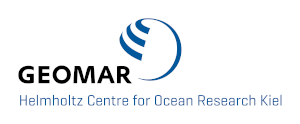TRACE, Western High Arctic Ocean between Svalbard and Ellesmere Island
TRace gAses (N2O, CO) Cycling in the Arctic marine Ecosystem (TRACE)
Principal investigator: Dr. Damian L. Arévalo-Martínez

Project Partners: Prof. Dr. Hermann Werner Bange, GEOMAR Helmholtz Centre for Ocean Research Kiel; Prof. Dr. Carolin Regina Löscher, University of Southern Denmark; Prof. Dr. Annie Bourbonnais, University of South Carolina, United States of America
Research Icebreaker: IB Oden
Schedule: August to September 2020
Abstract: This project addresses the biogeochemical cycling of the climate-relevant trace gases nitrous oxide (N2O) and carbon monoxide (CO) at the sea-air and sea-ice interfaces in the Arctic Ocean (AO). Although the ocean is generally acknowledged as an overall source of these gases, at regional and basin-scales there is a large range of variability in terms of their sources and sinks, which in turn, poses challenges to the accurate assessment of their role in the marine nitrogen and carbon cycles. Environmental changes such as warming and decrease in sea ice coverage are expected to affect production/consumption pathways of both N2O and CO, but the direction of the future trends is highly uncertain. In response to the particular sensitivity of the AO to climate change, we will conduct TRACE, a multidisciplinary study of pathways and emissions of these two gases within the context of the 2020 ODEN expedition, as an important contribution to the Synoptic Arctic Survey 2020. TRACE aims to fill the gaps of both data coverage and process understanding with respect to the marine cycling of N2O and CO in the AO.


